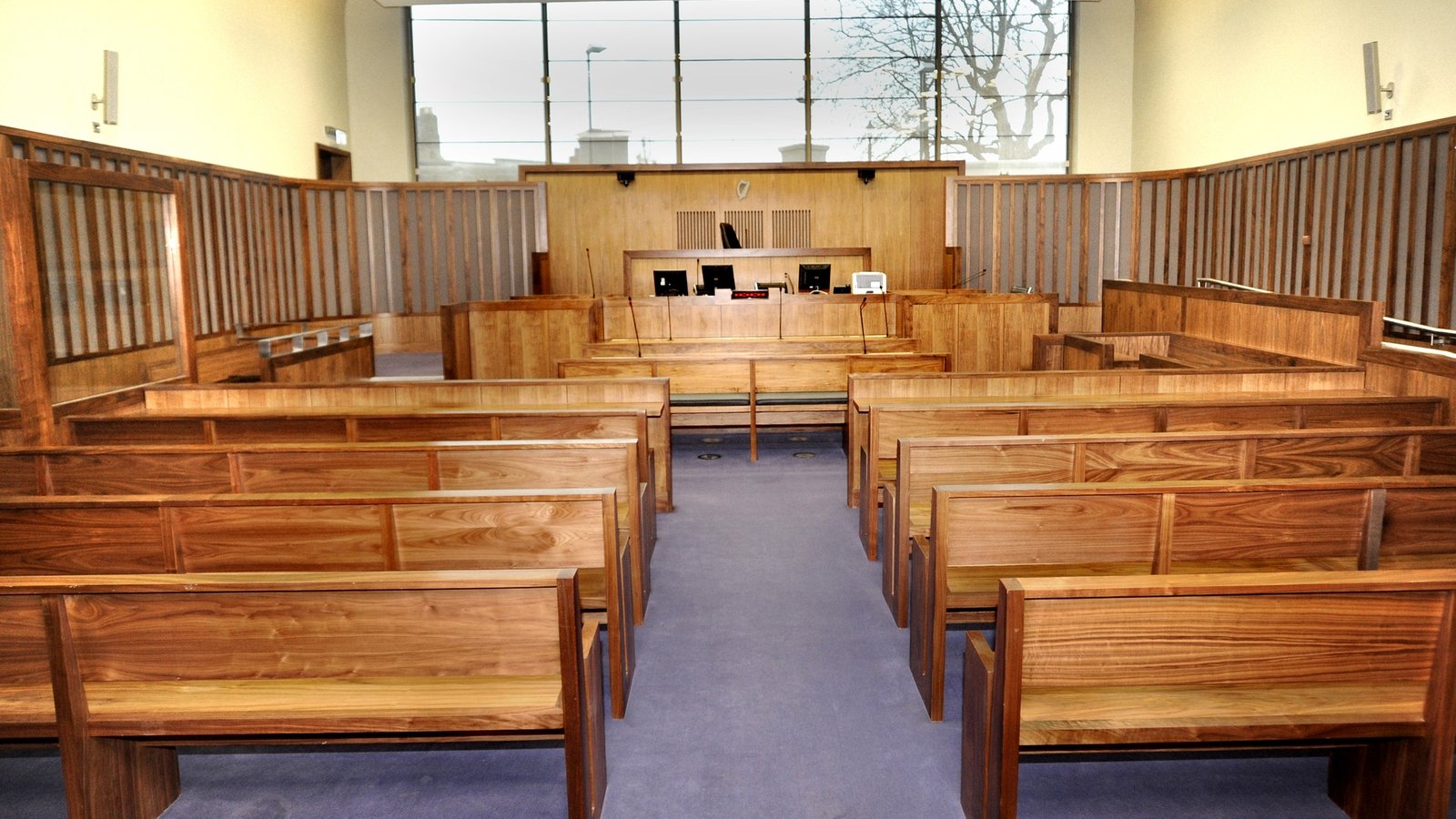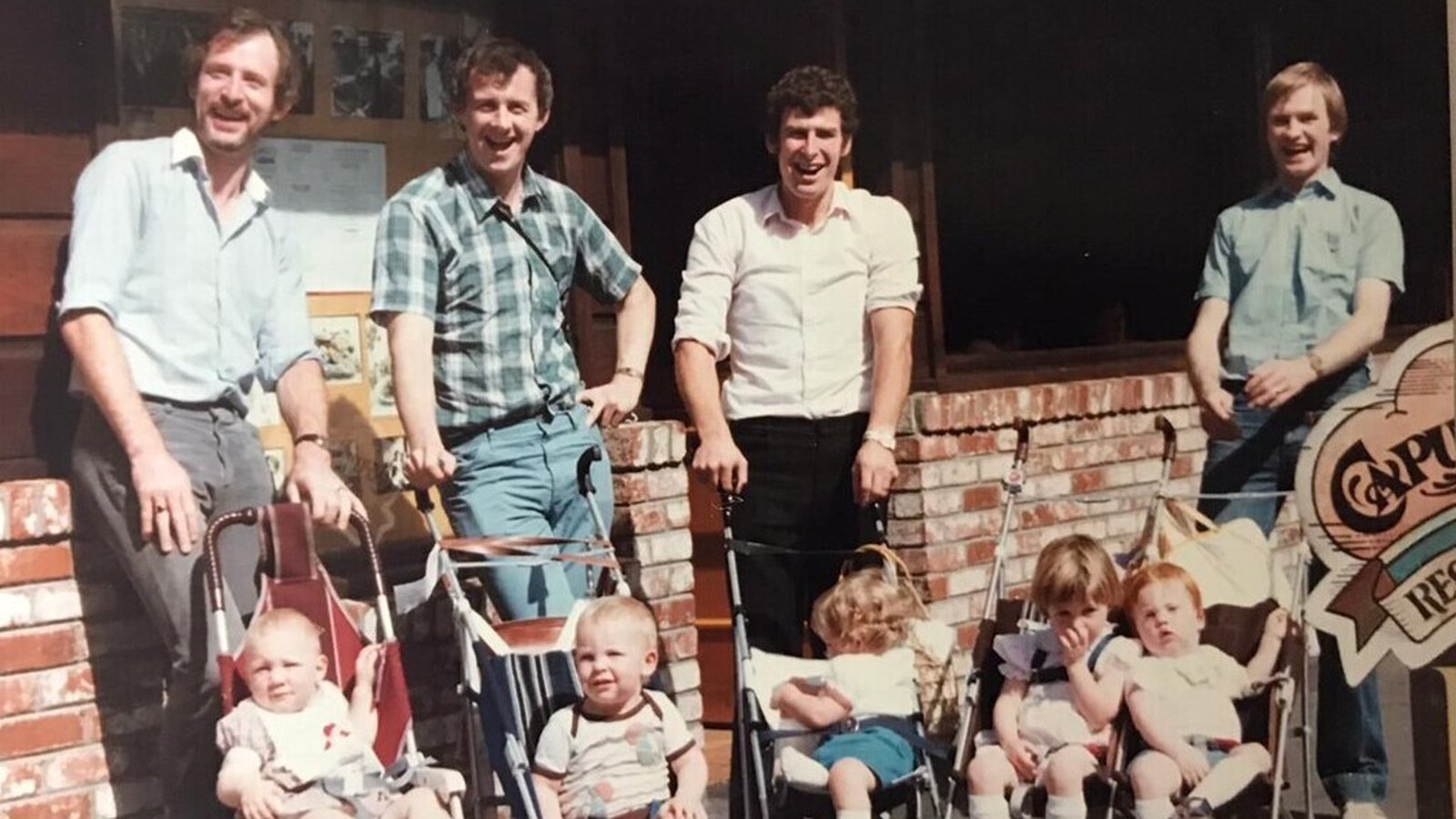What now for Dublin’s commercial property?

It is nearly fifty years since Pete St John wrote ‘The Rare Ould Times’, lamenting the changing face of Dublin city, in particular the “new glass cages, that spring up along the quay.”
If the city’s quaysides were beginning to change then, they have been transformed utterly by now.
The glass cages have evolved to soaring glass and steel towers, glittering monuments to international corporate finance. Over the decades, multinational firms flocked here and left their mark on the city’s skyline.
But more recently, the frenzied investment and building has stalled. Last year, in particular, was a year to forget for commercial property in Ireland.
Offices are lying empty. Vacancies are up, prices are down. In fact, the value of commercial property has dropped to its lowest level for over a decade and the Central Bank is monitoring the sector for a crash.
A recent report from Sherry Fitzgerald stated that total investment in commercial property last year was just over €2 billion, down from €4.7 billion the previous year.
Only 2% of deals went for over €100 million, down from 6% in the previous two years.
A closer look at the 2% of deals that were worth over €100 million shows that they accounted for 22% of total turnover in 2023.
BNP Paribas Real Estate said that the 114 commercial deals done in 2023 is significantly down on an average of 223 in the previous 10 years. The flow of office investment was the lowest since 2012.
A recent report from property consultancy HWBC found that three fifths of the office buildings currently being built have no tenant lined up.
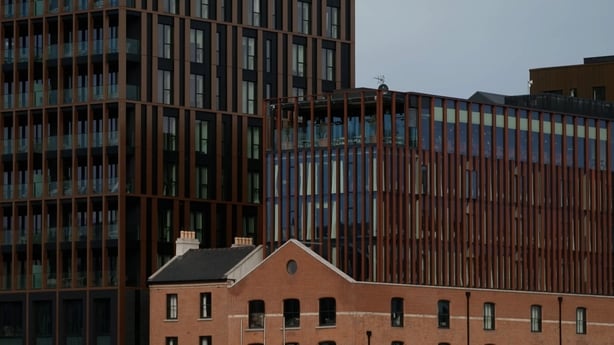
“We’ve seen figures showing that in Dublin, office lettings are down a third on previous years and quite a bit below their kind of previous average level. We’ve seen that the vacancy rate for Dublin offices is up to about 15%,” Dr Barra Roantree, Director of MSc Economic Policy at Trinity College Dublin, told Prime Time.
He noted a real slowdown in the commercial property market in core urban centres.
Dr Roantree also cites a weakening of the global economy, particularly in the tech sector, an industry that has fueled the expansion of Dublin’s “Silicon Docks”.
Many of the bigger firms are currently shrinking their global workforce, rather than expanding. Increased office space is not high on their list of requirements.
Colin Richardson, the Irish head of research for CBRE, one of the world’s largest commercial real estate outfits, says that rising interest rates over the last 18-24 months have impacted valuations across the entire commercial real estate sector.
In Ireland, he says that hotels and retail spaces have held up better and though “prime offices” have held up to some extent, “in non-core locations and suburban locations, we are seeing vacancy tick up.”
Working from home
Rising interest rates and slowing economies are nothing new, we’ve seen it all before. As the song goes, “Dublin keeps on changing and nothing seems the same.”
But what’s really different this time is perhaps an existential threat to the office itself: working from home.
The idea of the office being the place where the work is done is no longer as solid as it was before the pandemic. Are these temples of capitalism at risk of crumbling?
To try to get a sense of the feeling among workers in the city, Prime Time spoke to people on the street in Chapelizod, all of whom were working from home at least a couple of days a week.
None were willing to go back to the office five days a week. With full employment, it is now, perhaps, an employees’ market.
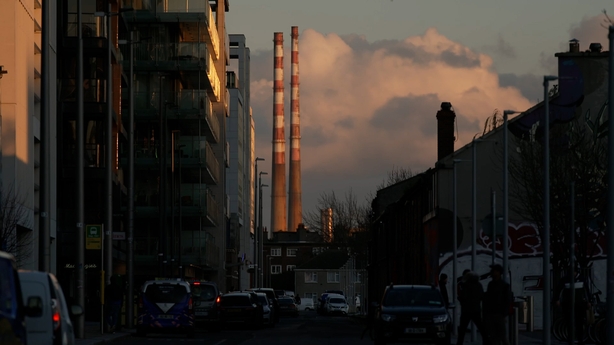
We’re now seeing a tug-of-war in corporate culture. Employees want to keep working from home as much as possible, whereas many bosses want people back on site.
Some of the world’s largest companies like Google, Dell and Goldman Sachs have reportedly told staff that 2024 is the year they’ll be going back to the office. Some companies have said that office attendance will be a factor in employees’ performance reviews.
In Grand Canal Dock, the mecca of Irish office work, the response is much the same.
Not a single person we spoke to works in the office five days a week. It’s not exactly a scientific conclusion but the nature of work is changing and perhaps more quickly in Ireland than anywhere else.
“Latest figures from Eurostat show that in Ireland, a quarter of workers said that they usually, that’s two or three days a week, work from home now. Which is much higher than any other country in the EU. It’s more than twice the EU average,” Dr Roantree says.
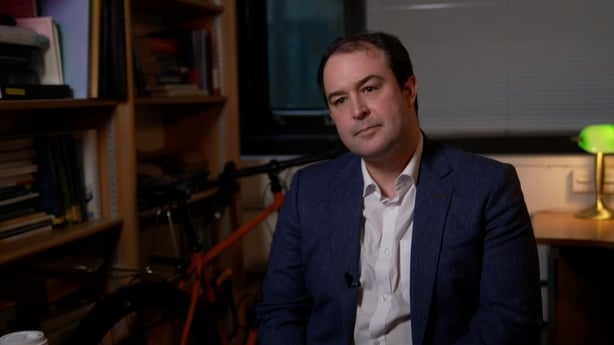
If the days of everybody in the office five days a week are over, but people are still in the office once or twice a week, how does then change what kind of office is needed to do business?
It has been suggested that the amount of office space required could be dramatically reduced as a result of hybrid working. Are the giant office blocks set to “fall to progress” in the same way as the warehouses that came before them?
Dr Adele Grazi is assistant professor of psychology in Trinity College Dublin and says that the nature of work is currently going through a major transition, with businesses thinking differently about how they recruit.
“Right now, for example, in Ireland, we don’t have to recruit people that live in Dublin anymore. We can also recruit people that live in London or that live even in China. So that is going to become a big shift,” Dr Grazi told Prime Time.
It may be jarring to think of a business operating without any kind of bricks-and-mortar base but the idea that a business needs a prestige, landmark office may now belong to a bygone era. And there could be a risk in holding onto that idea.
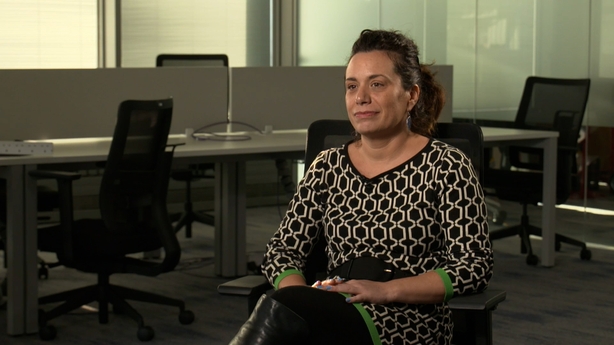
Take the example of The Messenger, a news media company started last year with 50 million dollars of investment, a sizable portion of which went on leasing an entire floor of a New York skyscraper, for a staff primarily working remotely or hybrid.
The office was 107,000 square feet, in the business district of Manhattan where the average asking price for subleased office space was reportedly $48.27 per square foot, at the time the deal was done.
Writer Jordan Hoffman was among the staff, who lost their jobs when the company folded after less than a year.
“They spent a lot of money on salaries, which I liked. But also there was a lot of waste; gorgeous, modern, sleek office, with views of the Brooklyn Bridge and the Wall St area. And it was mostly empty. It was a couple of people there and a thousand-dollar coffee machine. I think this indicative of not really knowing how things work today. Old thinking. 2oth century thinking for the 21st century,” Mr Hoffman told Prime Time.
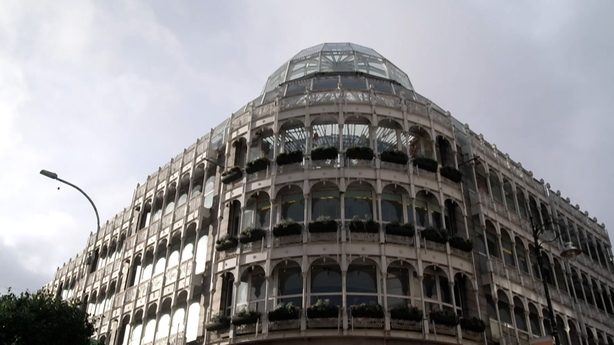
In Dublin, 21st century thinking is taking an existing shopping centre and knocking it down to build a shopping centre that has lots of offices in it.
The designs for a new Stephen’s Green centre have been ridiculed online but have also been driving debate about what we want from Irish cities.
Historian Donal Fallon is enthused by how engaged people have become about the planning of the capital.
“There seems to be a real discussion going on about the shape of the city and planning in the city. And when people are talking about where they live, that can only be a good thing in my mind. I think every urban centre, coming out of a pandemic, has a unique opportunity to have these discussions – what kind of a city do we want?” he told Prime Time.
Dublin is in many ways “a tragic example” of what happens when city development is allowed to be dictated by “speculative property development capital, known as real estate,” Associate Professor in Social Policy at Maynooth University Dr Rory Hearne said.
It poses the question: what are these developments for?
“Is it simply to maximise the retail, the profit, the rents that are made from that? Or is it actually to create places where people want to be, where they can spend time, leisure time, where they can live. And I think we need to relook at the whole notion of how we develop our cities,” Dr Hearne told Prime Time.
The changing face of cities is something that needs to be considered by businesses planning their future. Where will they need to be? Where will their employees want to be, or be willing to go?
Though Dr Grazi believes that most companies will retain an element of hybrid work, there is still a lack of hard data on the impacts of working from home and hybrid.
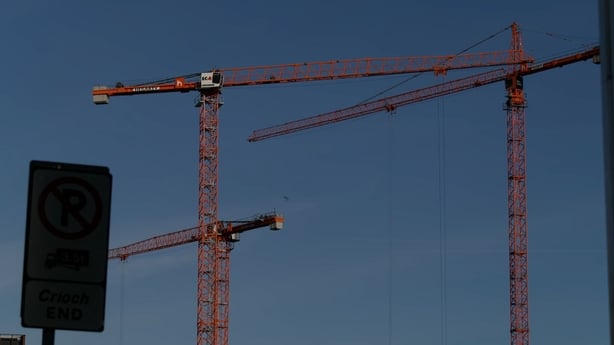
The bigger picture though is that this could all be a perfect storm for commercial property and properties dropping in value will mean greater levels of debt in the sector. So how exposed is the Irish economy to any shockwaves caused by a crash?
Dr Roantree points out that government policy, informed by Central Bank advice, has been designed to insulate the Irish economy from such an event.
“If there is going to be a slowdown in commercial property market, it means that Irish people aren’t on the hook for it like we were during the financial crisis,” he said.
On the other hand, he said, it might also expose the Irish economy to some risks.
“If these are big global commercial real estate companies and they’re being hit by something that we’re seeing around the world, then that might mean that there’s a bit more possibility for a shock, say, in the US, to come through to Ireland,” Dr Roantree said.
While Dr Hearne agrees with the risk, he also sees opportunity. Could a crisis in commercial property in turn address the current crisis in housing?
“It could be a positive impact in terms of falling rents for commercial property, which would mean less business costs. It could also mean that potential to shift from the use of commercial offices in buildings to building residential.”
Despite all of this, the cranes are still busy. The offices of tomorrow are already being built. It’s not yet obvious how much the work of tomorrow will need them.
Rather than being doomed to lie empty, Mr Richardson of CBRE believes that the newer offices will be the ones in demand, with greater corporate pressure now being exerted on larger companies to base themselves in more energy-efficient office.
This in turn may see the demand drop further for those older, “secondary” office complexes, particularly in the suburbs.
“This new stock over time we do believe will be absorbed. Corporates, big office occupiers are seeking A-rated stock. So sustainable, energy efficient buildings. So over time that stock will be absorbed.”
Watch reporter Conor Wilson and producer Aaron Heffernan’s full report on the 20 February edition of Prime Time at 9.35pm on RTÉ One and RTÉ Player.

